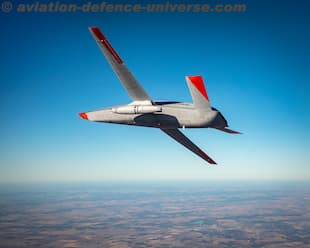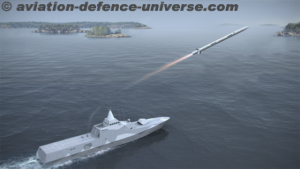- The current CBARS program dramatically shifts the orientation of the airframe from a stealthy platform to a less demanding configuration, which may account for the relatively short development time the Navy envisions.
Washington. 20 March 2024. In March 2010, the Navy released a request for information on the UCLASS (Unmanned Carrier Launched Surveillance-Strike) system, which was envisioned as the actual service version of its previous UCAV program. Program funding for UCLASS started in FY12. The Navy effort was aimed at fielding a carrier-borne strike UCLASS around FY20.
In June 2011, the Navy awarded four conceptual demonstration awards to four contractors valued at about $500,000 each: Boeing, General Atomics, Lockheed Martin, and Northrop Grumman; this was followed by four $15 million contracts in August 2013.
The UCLASS was substantially reconsidered after a strategic portfolio review in 2015, with the new requirement titled the MQ-25 Stingray Carrier Based Aerial Refueling System (CBARS). The role of the aircraft shifted from the strike mission to the aerial tanker/ISR mission. The Navy released a request for proposals for the Air System Segment development in October 2017 and plans to downselect and award an EMD contract one year later. The four competitors received risk reduction/concept refinement contracts in September-October 2016 valued at around $40 million each.
On 30 August 2018, Boeing was awarded an $805 million contract for the engineering and manufacturing development of the MQ-25. The Navy planned to acquire seven RDT&E aircraft, funding four in FY19 and three FY20. Boeing already built a test aircraft, dubbed T-1 that conducted its maiden flight on 19 September 2019.
In 2020, the Navy decided against providing a government-supplied ground control system for the MQ-25, opting instead for an industry supplied system. Boeing received the integration contract for this in 2020 with Lockheed Martin awarded the GCS portion.
The test aircraft demonstrated refueling capabilities during early flight tests in 2021-2022. During a test flight on 4 June 2021, MQ-25 T1 successfully extended the hose and drogue from its US Navy-issued aerial refueling store (ARS) and safely transferred jet fuel to a US Navy F/A-18 Super Hornet, the first demonstration of its aerial refueling mission. The Boeing-owned MQ-25 T1 conducted an aerial refueling of a E-2D Hawkeye from St. Louis in August 2021. This aircraft was also used in carrier trials on the USS Bush in December 2021.
The first prototype aircraft (AV-1) was scheduled to be delivered in 3Q/FY21 followed by the remaining three from the FY19 batch through 2Q/FY22. The initial UMCS delivery was scheduled for 3Q/FY21. Initial long-lead procurement funding began in FY22. Initial Test and Evaluation is scheduled for 3QFY24 – 3Q FY26. Initial Operational Test and Evaluation is planned for 3QFY26 – 1QFY27. The delivery of the first production aircraft is scheduled for November 2026. Initial Operational Capability is expected in 4QFY26, a slip of one year compared to previous plans.
The FY23 budget request put the overall program objective at 69 aircraft at a cost of $9.9 billion for procurement. The FY24 budget increased this to $11.6 billion for 69 aircraft and reduced the FY23 procurement from four aircraft to one.































































































































